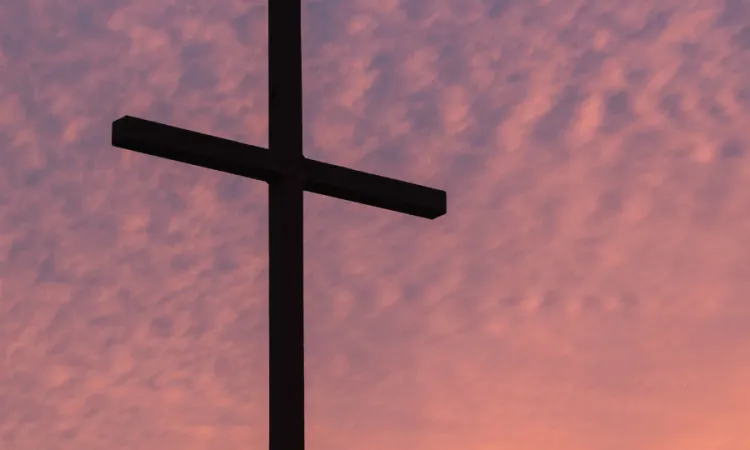From the earliest days of Church, Christians also faced east when at prayer. In fact, Tertullian (160-220 AD) actually had to defend Christians against the pagans who accused them of facing east to worship the sun. Many Church Fathers, such as St. Clement of Alexandria, St. Basil and St. Augustine, also speak of the practice of facing east. In the 3rd century, the Didascalia, a treatise on church order from northern Syria, set down the rule of facing east during the Eucharist. It said, "Let the place of the priests be separated in a part of the house that faces east. In the midst of them is placed the bishop's chair, and with him let the priests be seated. Likewise, and in another section let the laity be seated facing east" (Didascalia, Chapter 12).
Before Christianity was legal in the Roman Empire, Christians worshipped in their homes. One of the oldest known house churches has been discovered on the far eastern edge of the Roman Empire, in present day Syria, at Dura-Europos. This house church dates from 233 A.D. Archaeologists have uncovered an assembly room in the house where as many as 60 people would gather for prayer. The room was designed with an altar against the east wall. In this way, the priest and all the faithful would together be facing east when celebrating the Eucharist.
Writing in the 7th century, St. John of Damascus gives three explanations for the eastward stance of Christians at prayer. First, Christ is "the Sun of Righteousness" (Mal 4:2) and "the Dayspring from on high" (Lk 1:78). Facing the light dawning from the east, Christians affirm their faith in Christ as the Light of the world. Second, God planted the Garden of Eden in the east (cf. Gn 2:8). But, when our first parents sinned, they were exiled from the garden and moved westward. Facing east, therefore, reminds Christians of their need to long for and strive for the paradise that God intended for them. And, third, when speaking of his Second Coming at the end of history, Jesus said, "For just as lightning comes from the east and is seen as far as the west, so will the coming of the Son of Man be" (Mt. 24:27). Thus, facing the east at prayer visibly expresses the hope for the coming of Jesus (cf. St. John Damascene, An Exposition of the Orthodox Faith, Book IV, Chapter 12).
Holding fast to this ancient tradition of facing eastward at prayer, the 12th century builders of the first St. Stephen's Cathedral in Vienna oriented this church to be in line with sunrise on the feast of St. Stephen. However, even from the early centuries, not all churches adhered to this tradition. In fact, the Basilicas of St. John Lateran and St. Lorenzo in Rome and St. Peter's in the Vatican were built facing westward. So also the important Basilica of the Resurrection in Jerusalem. Thus, when a bishop or priest celebrates the Eucharist in these churches, the people and priest face each other. Nonetheless, the celebrant himself still remains facing the east. By his position, the celebrant stands before the faithful as a reminder to focus, not on him, but on Christ, whose coming they await.
In celebration of the ancient Coptic Rite of Egypt, a deacon exhorts the faithful with the words "Look towards the East!" His age-old exhortation, found also in Greek and Ethiopian liturgies, stands as a strong reminder of the spiritual direction of our prayer. As Christians, we join all our prayers to those of Christ. We turn our eyes and our hearts ad orientem, to Christ, the Dayspring who comes from the east to meet us in the Eucharist and will come at the end of our earthly pilgrimage to gather us together into the home of our Father, the New and Eternal Jerusalem.
Today, our churches do not conform to one standard architectural design. Some are shaped like Rome's ancient basilicas. Some resemble a Latin cross; others, a Greek cross. And, many of the more recently constructed churches favor the form of an amphitheater. A quick overview of how the Eucharist has been celebrated from the birth of Christianity shows us that, over and above the physical design of any church, the spiritual orientation of the faithful at prayer is most important.


